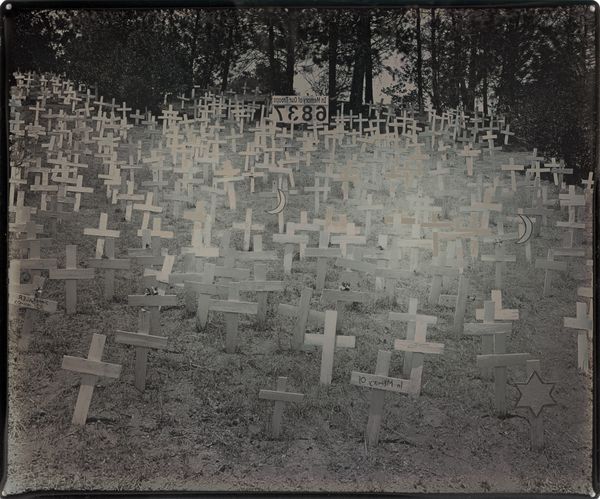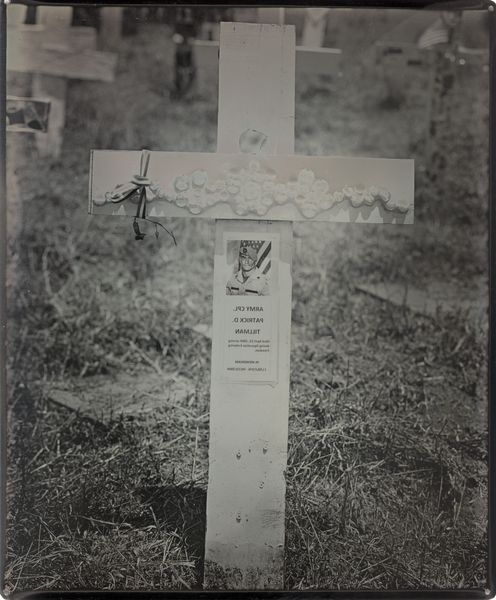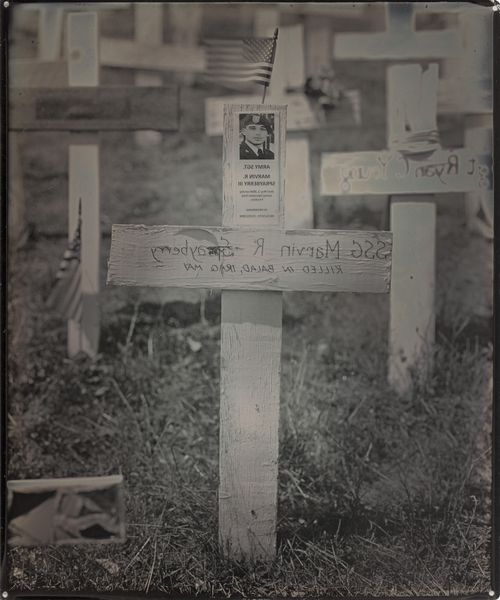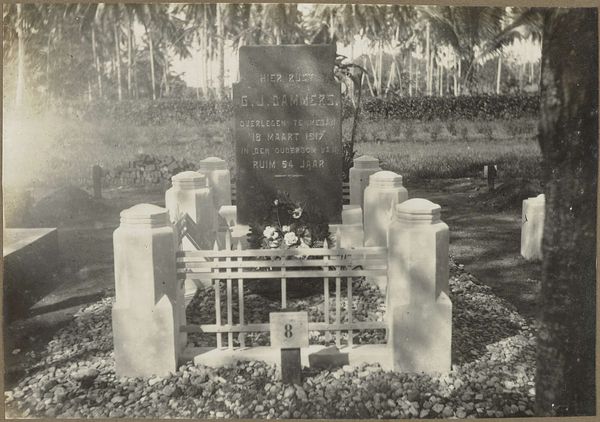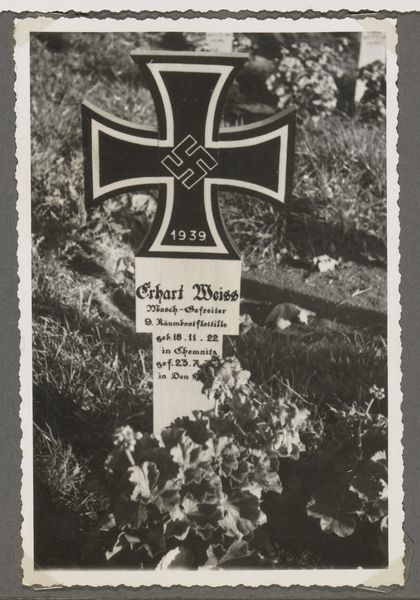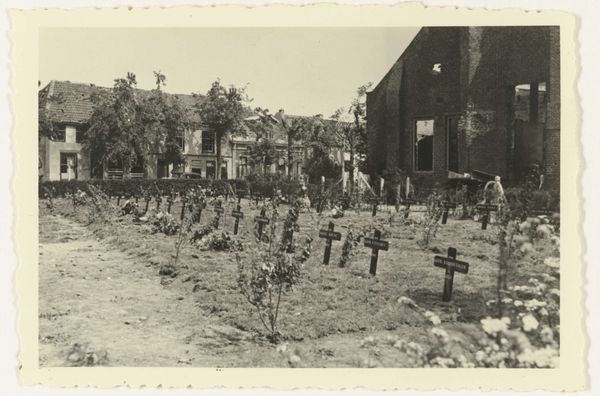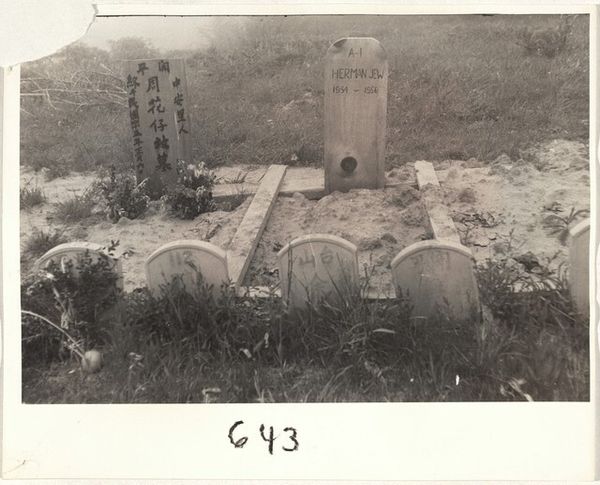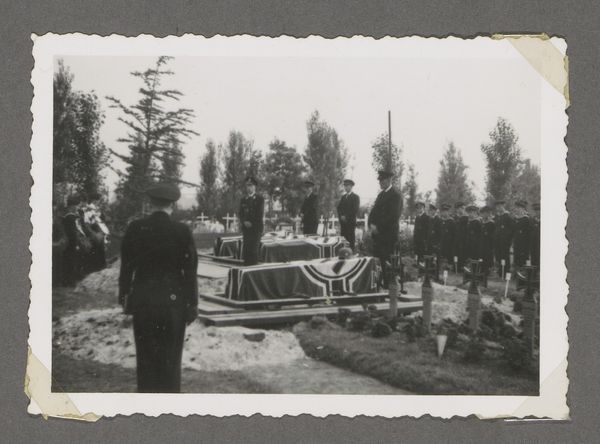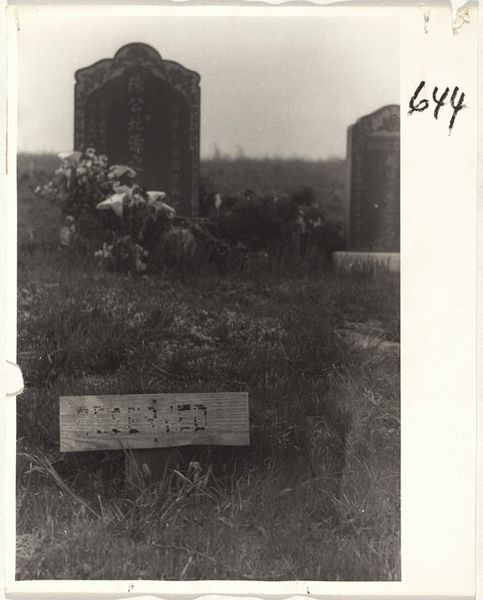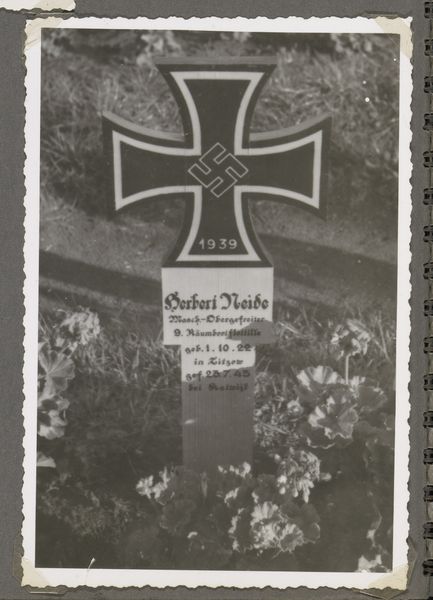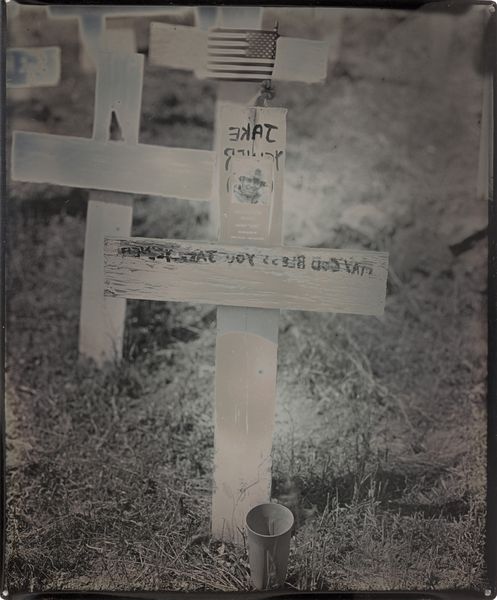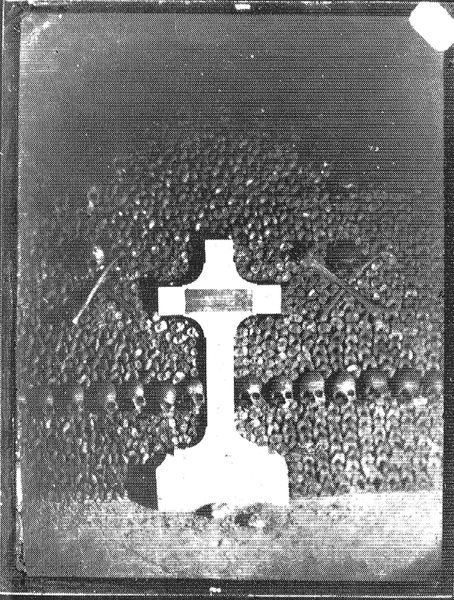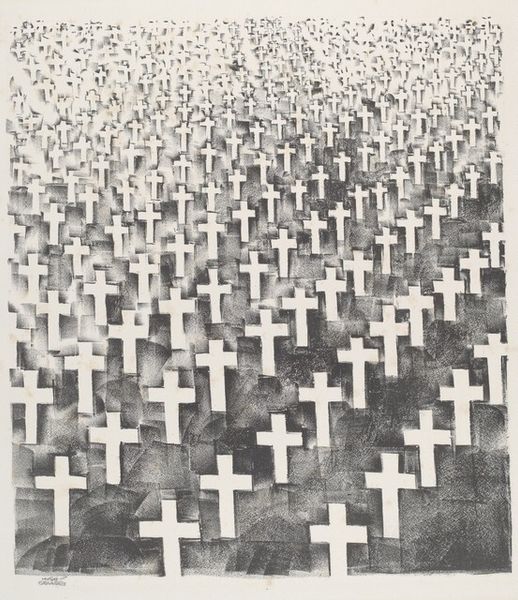
Graven van gevallen Duitse soldaten van de Kriegsmarine Possibly 1943 - 1947
0:00
0:00
Dimensions: height 88 mm, width 129 mm
Copyright: Rijks Museum: Open Domain
Curator: Welcome. We are looking at an anonymous gelatin-silver print from around 1943-1947, entitled "Graven van gevallen Duitse soldaten van de Kriegsmarine" – Graves of fallen German soldiers of the Navy. It is currently held in the Rijksmuseum. Editor: My immediate response is of desolation. The seemingly endless rows of dark crosses against the pale markers create a visual field of somber reflection and a reminder of the horrors of war. Curator: The photographer employs stark contrast, accentuating the rigid geometry of the crosses. Note how the crosses repeat—a pattern interrupted by the slightly uneven rows and subtle variations in light, preventing sterile uniformity. This interplay introduces a visual rhythm, albeit a mournful one. The desaturated colours further enforce the grim visual tonality. Editor: It's compelling to consider the image as a historical document. We must reflect on the materiality here - a gelatin silver print. The process of its making, the darkroom labor, and the chemical interactions – these are tangible traces of an effort to record and bear witness. The image forces a confrontation with the realities of war beyond the heroic narrative. It challenges the viewer to consider the labor of documentation and its implications. Curator: Precisely. The medium and photographic style lend a sense of austere realism, countering any romanticised notion of war. Look at the precise rendering of details in each cross and nameplate. Each marker has its own distinct characteristics, challenging our perception of this tragic image and adding more dimension to it. Editor: Moreover, the repeated visual motif of the cross acts as a potent symbol, freighted with religious and historical baggage, that speaks to loss, sacrifice, and perhaps atonement. The photograph doesn't merely depict a cemetery; it presents an ideological battlefield where meanings of duty, memory, and culpability contend with one another. It leaves an open interpretation, thus turning its subject into an act of witnessing rather than mere depiction. Curator: Indeed, the arrangement allows viewers to fill the representational gap with their own interpretation. Editor: A sobering testament to loss rendered with stark beauty. Curator: It's a photograph that reminds us of the enduring power of form to carry heavy cultural and emotional weight.
Comments
No comments
Be the first to comment and join the conversation on the ultimate creative platform.
